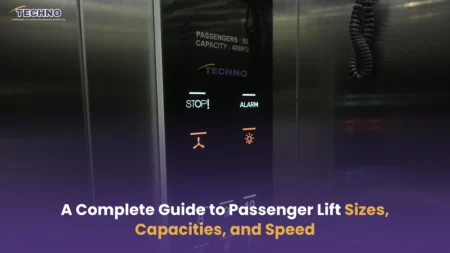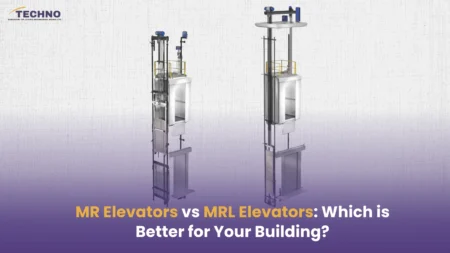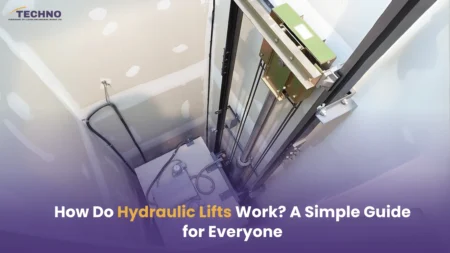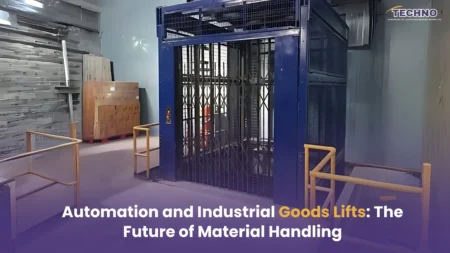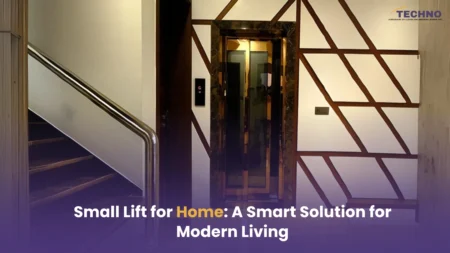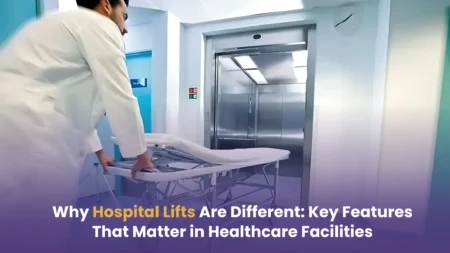A decade ago, elevators were just a luxury! Today, they’ve become an essential part of our daily routine. Yet many homeowners still hesitate before installing lifts, because of their budget with concern. I’ve seen this hesitation firsthand with clients considering standard home elevators, hydraulic lifts, or those sleek capsule lifts.
The biggest myth I hear is “Elevators cost very high to install and maintain.” But people don’t realize that a well-designed as well as properly maintained elevator actually saves money. Regular check-ups prevent middle-of-the-night emergency breakdowns that cost you even double your budget.
So how can you keep costs reasonable without compromising the safety standards? We will clear all of your doubts and break all the myths in this article..
Factors Affecting Elevator Installation Costs
The cost of Home Elevators depends on many factors. From elevator type to installation complexity plays a crucial role in determining the final expense. You should keep these points in mind while thinking of installing home elevators.
1. Type of Elevator
The type of elevator you choose significantly impacts both installation and maintenance costs. Below are the most common types:
Hydraulic Home Lifts:
These lifts operate using fluid pressure. They are ideal for smooth rides and high load capacities. They require a machine room, which increases installation complexity.
Capsule Lift for Home:
Capsule lifts are designed for aesthetics. They are made of glass panels and have a 360-degree transparent view. These elevators enhance home value but can be costlier than standard models.
Traction Elevators:
This type is common in commercial buildings. Traction elevators use counterweights to balance the load and this leads to greater energy efficiency.
Pneumatic Elevators:
Pneumatic elevators are compact, modern, and ideal for homes with space limitations. They require minimal installation work but on the other side, they may have higher maintenance costs.
2. Load Capacity and Size
A small lift for home designed for 2-3 people is far more affordable than a commercial-grade elevator built to transport large groups. The heavier the load capacity, the stronger the components required, and at the end? increased costs.
3. Number of Floors
A Hydraulic Home Lift for a two-story building is significantly cheaper than an elevator built for 10+ floors. The higher the structure, the more complex the elevator shaft, control system, and power supply needs become.
4. Customization & Smart Features
While basic elevators function efficiently, many homeowners and businesses prefer premium featured elevators like:
- Touchless controls to enhance hygiene and convenience.
- Smart diagnostics to get real-time alerts for maintenance needs.
- High-end interior finishes including luxury materials like glass, wood, or stainless steel add aesthetic appeal but increase costs.
5. Installation Complexity
The cost of civil work depends on whether the elevator is being installed in a new building or retrofitted into an existing structure. Retrofitting often costs more than the fully new one. How? Read below:
- The technique becomes more complicated when the structure is reinforced to support the elevator.
- You need to install a new power backup and electrical wiring.
- You have to invest more money if a room needs to be set up for machine rooms and shafts.
Now you know why retrofitting is more expensive than installing a lift during initial construction.
6. Location & Compliance Requirements
Installation costs also depend on location and safety regulations. Metro cities tend to have higher labor and material costs. Additionally, local safety codes and regulatory standards may require additional safety features. Hence the overall investment increases.
Let’s Break Down Elevator Maintenance Costs
Once you install, an elevator requires ongoing maintenance to ensure safety, efficiency, and longevity. Let us bring light upon the maintenance costs elevators and lifts require.
1. Routine Inspections & Preventive Maintenance
You need to look for regular servicing because it,
- Prevents unexpected breakdowns.
- Ensure smooth operation.
- Extend the elevator’s lifespan.
A professional technician should check these things while servicing:
- Lift motor performance to ensure smooth movement without excessive noise or vibration.
- Hydraulic fluid levels to prevent system failures.
- Door alignment & sensors for correct safety mechanisms.
- Control panel & wiring to avoid electrical faults that could lead to malfunctions.
So the average cost for maintaining any elevator is ₹5,000 to ₹15,000 per visit, depending on elevator type and usage.
2. Repairs & Part Replacements
Over time, even well-maintained elevators require component replacements. Here’s an estimate of some common repair costs:
Component | Estimated Cost | Replacement Frequency |
Lift Motor | ₹50,000 – ₹2,00,000 | 10–15 years |
Control Panel | ₹30,000 – ₹1,50,000 | 8–12 years |
Cables/Pulleys | ₹10,000 – ₹50,000 | 5–10 years |
Hydraulic Fluid (for Hydraulic Home Lifts) | ₹5,000 – ₹10,000 | Annually |
3. Annual Safety Compliance & Certifications
Elevators need annual safety inspections to comply with building codes. Ensuring safety compliance avoids legal issues and guarantees smooth operation.
Cost: ₹10,000 – ₹50,000 annually, depending on elevator type and location.
4. Emergency Repairs
A sudden breakdown requires immediate attention. Emergency call-outs can be expensive, making preventive maintenance a more cost-effective approach.
Why Regular Maintenance Saves More Money Than Repairs
Many elevator owners skip routine servicing to save money. But they don’t realize that when a major breakdown occurs, it leads to major repair costs. These are the reasons that clearly indicate that a proactive maintenance plan is the better choice:
- Maintenance reduces major repair expenses. Because Fixing minor issues early prevents costly breakdowns later.
- This extends the elevator’s lifespan. It means a well-maintained elevator lasts 25+ years.
- Proactive maintenance confirms continuous and constant service without any malfunctions.
- Your elevators improve energy efficiency by lowering electricity consumption.
Techno Industries offers maintenance for every elevator, whether they have installed it or not. Their expert team ensures smooth, safe, and energy-efficient operation to prevent unexpected failures and costly repairs.
How to Get the Most Out of Your Investment in Elevators?
Do You Wish to Reduce the Cost of Elevators? Then use these tactics:
- Choose the appropriate elevator type: If money and room are limited, purchase a modest lift for your house.
- Collaborate with dependable experts: Reliability is guaranteed by elevator firms with a solid track record.
- Invest in routine maintenance to avoid costly repairs.
- Think about energy-efficient versions. Compared to older models, modern elevators use 30-40% less power.
Final Take
Elevators make movement effortless, add real value to your property, and ensure every floor feels within reach.
Techno Industries, being the best elevator company in India, has been part of many house stories. Right elevator can completely change the way people experience their space. Whether it’s a sleek glass capsule lift that becomes a statement piece, a small lift for home or a well-maintained system that runs like new, we make sure your elevator works for you.
And don’t worry if you are planning to upgrade your existing one! It doesn’t matter if it is installed by any other elevator companies, we give service, upgrade, and fine-tune it to keep it running at its best. Because reliable, smooth, and safe vertical movement is our top most priority.



